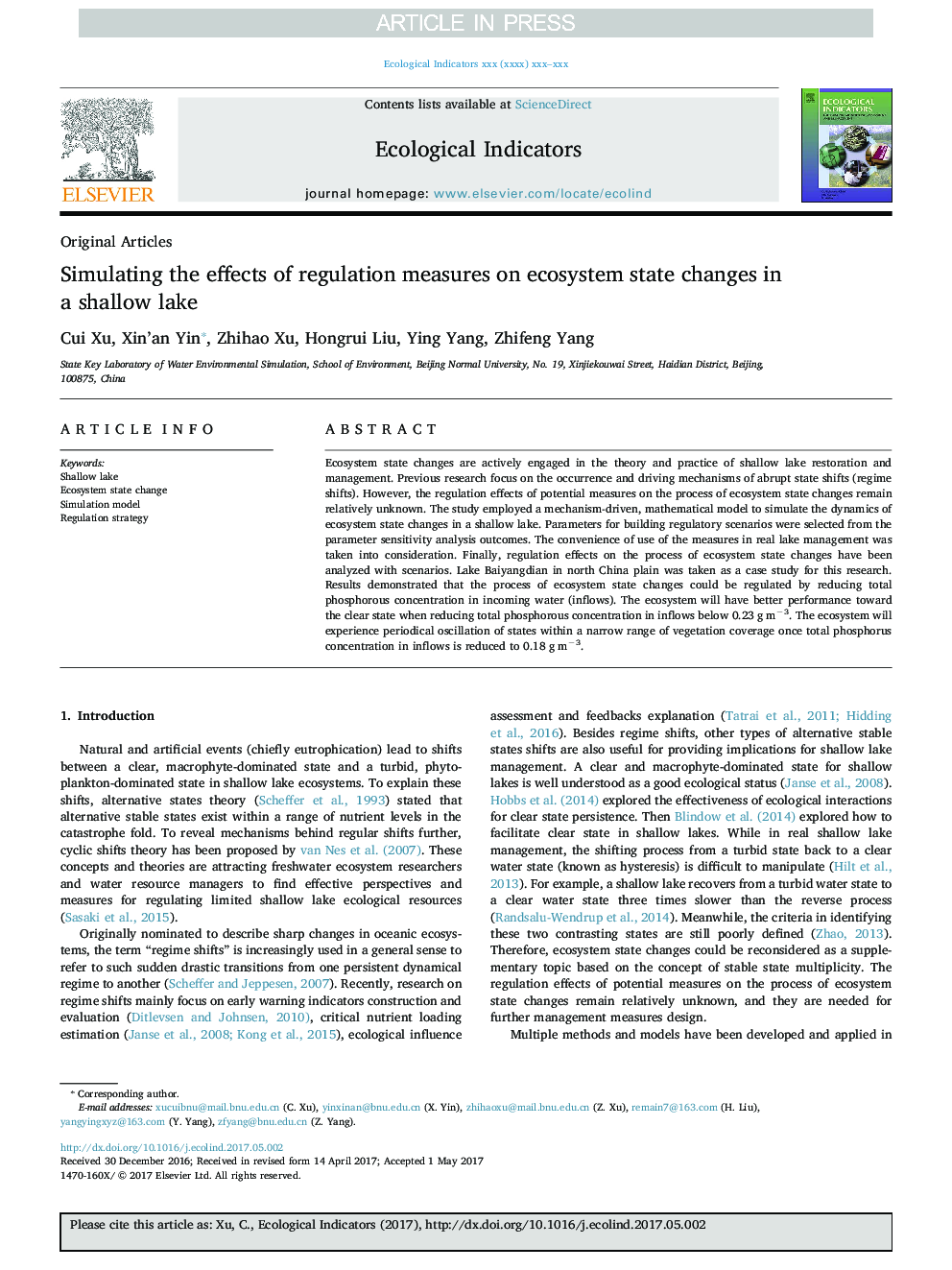| Article ID | Journal | Published Year | Pages | File Type |
|---|---|---|---|---|
| 8845193 | Ecological Indicators | 2018 | 10 Pages |
Abstract
Ecosystem state changes are actively engaged in the theory and practice of shallow lake restoration and management. Previous research focus on the occurrence and driving mechanisms of abrupt state shifts (regime shifts). However, the regulation effects of potential measures on the process of ecosystem state changes remain relatively unknown. The study employed a mechanism-driven, mathematical model to simulate the dynamics of ecosystem state changes in a shallow lake. Parameters for building regulatory scenarios were selected from the parameter sensitivity analysis outcomes. The convenience of use of the measures in real lake management was taken into consideration. Finally, regulation effects on the process of ecosystem state changes have been analyzed with scenarios. Lake Baiyangdian in north China plain was taken as a case study for this research. Results demonstrated that the process of ecosystem state changes could be regulated by reducing total phosphorous concentration in incoming water (inflows). The ecosystem will have better performance toward the clear state when reducing total phosphorous concentration in inflows below 0.23 g mâ3. The ecosystem will experience periodical oscillation of states within a narrow range of vegetation coverage once total phosphorus concentration in inflows is reduced to 0.18 g mâ3.
Keywords
Related Topics
Life Sciences
Agricultural and Biological Sciences
Ecology, Evolution, Behavior and Systematics
Authors
Cui Xu, Xin'an Yin, Zhihao Xu, Hongrui Liu, Ying Yang, Zhifeng Yang,
